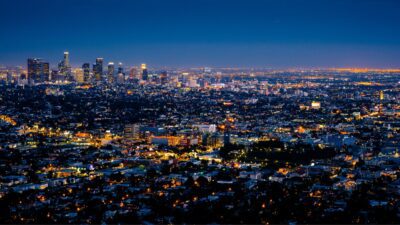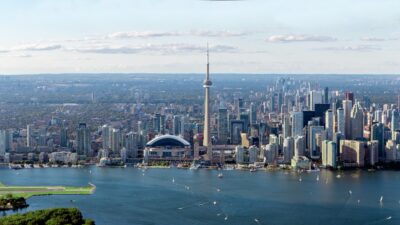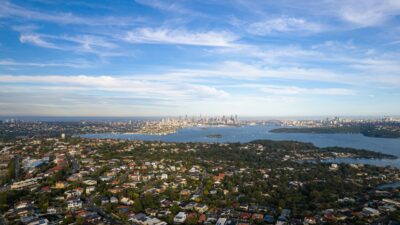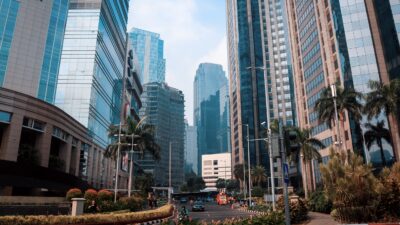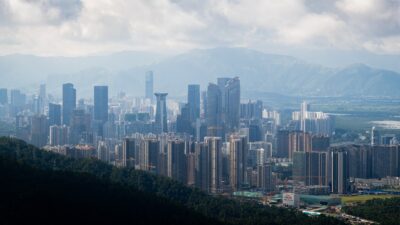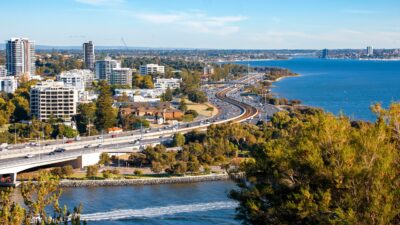Tooran Alizadeh
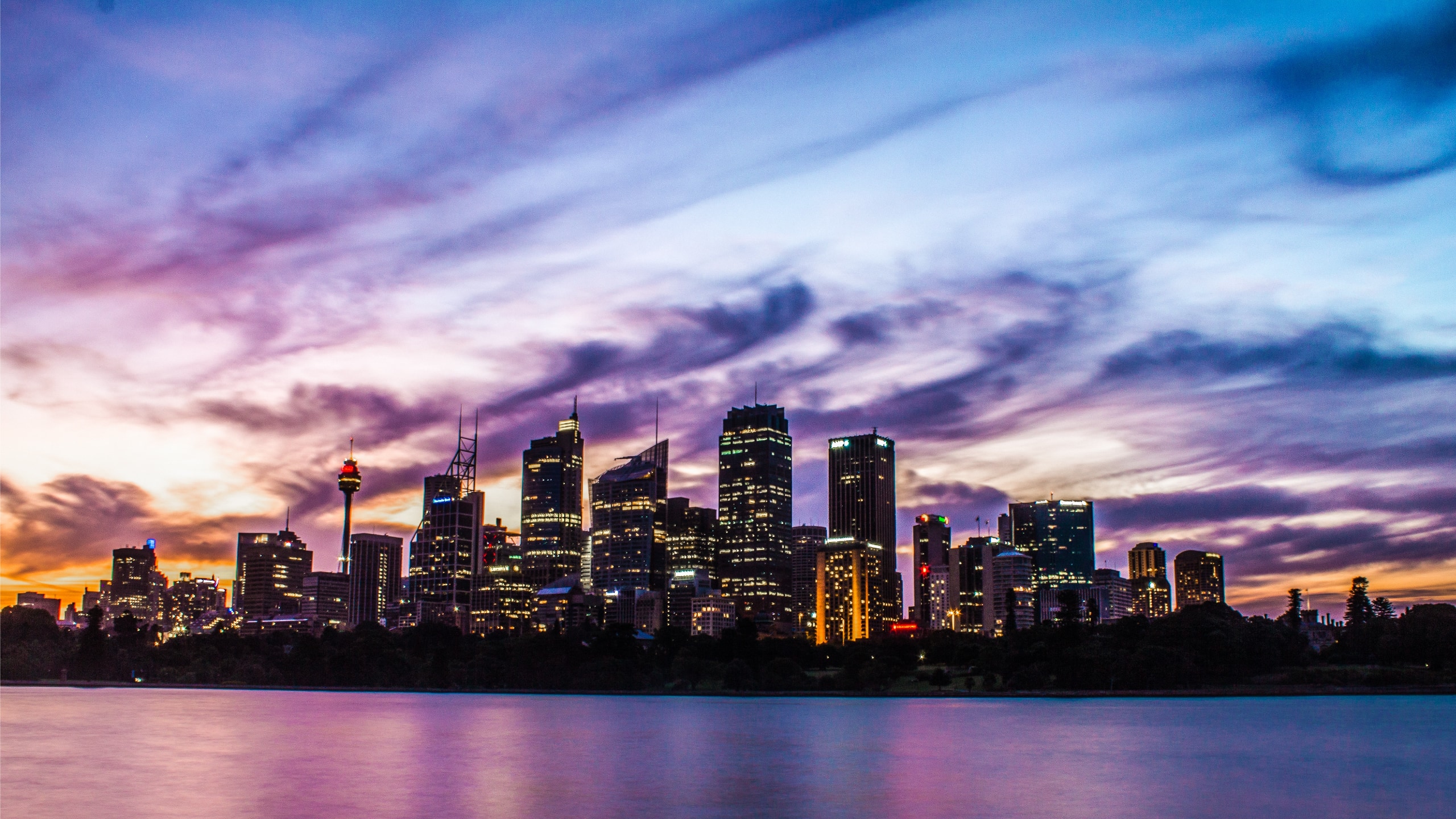
Reimagining Sydney: this is what needs to be done to make a Central City CBD work
The Sydney metropolis has a very long and bumpy way to go before we can re-imagine it with more than one CBD. Visionary and bold decision-making, supported by significant investment, is required for the Central City to transition to a metropolitan centre.

Image: Jamie van Geldermalsen, Mile Ilija Barbaric, Rao Umair Afzaal, Kun Fan, Author provided
Today, I introduce a bold proposal to build a Central CBD for metropolitan Sydney, as a real complement to the City of Sydney CBD to the east.

Image: Jamie van Geldermalsen, Mile Ilija Barbaric, Rao Umair Afzaal, Kun Fan, Author provided
Central City 2048 is a 30-year strategic plan, which builds on the Greater Sydney Commission’s Greater Sydney Region Plan. Central City 2048 presents a vision for a dynamic, connected and sustainable CBD at the heart of the Greater Sydney metropolitan region.
Employment, transport and housing targets to be achieved by Central City 2048 are listed in Table 1.

Economy
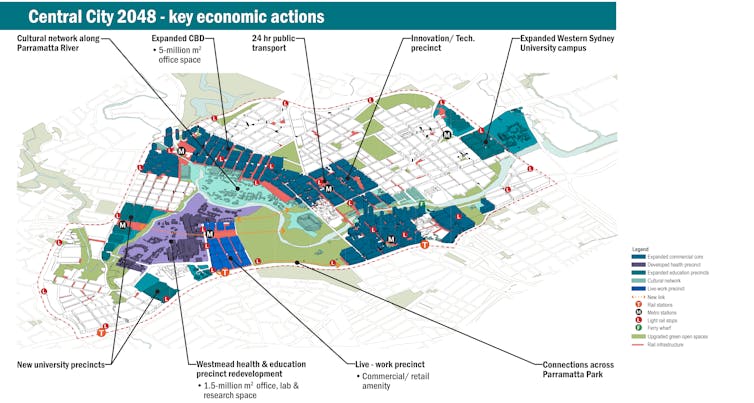
Image: Jamie van Geldermalsen, Mile Ilija Barbaric, Rao Umair Afzaal, Kun Fan, Author provided
Central City’s economy is supported by two pillars: Parramatta CBD and the Westmead health and education precinct. There is a key strategic challenge to attract finance, tech, education and creative industries, while supporting existing health and government sectors. Essential to economic growth is the provision of dedicated commercial and retail floor space, and regional access to it.
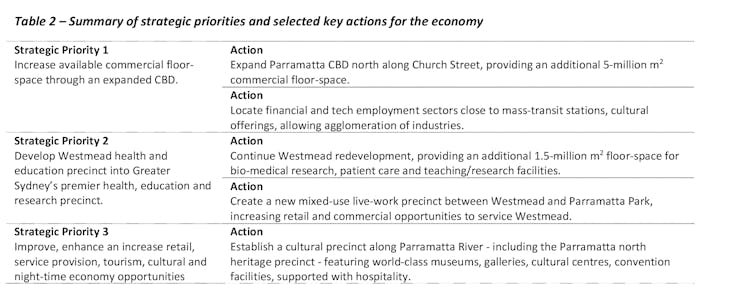
Connectivity
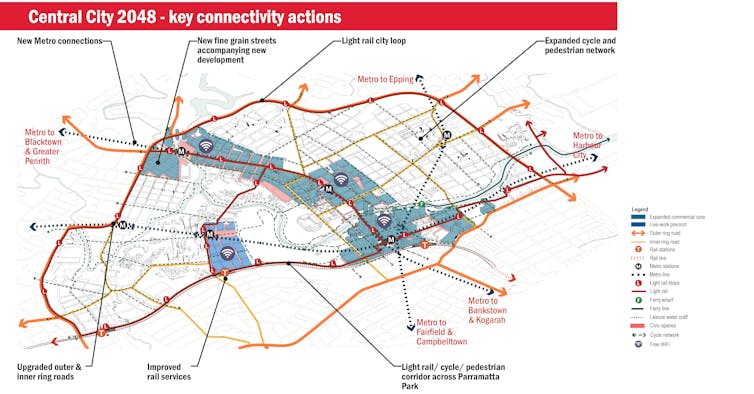
Image: Jamie van Geldermalsen, Mile Ilija Barbaric, Rao Umair Afzaal, Kun Fan, Author provided
Currently, commuter travel time to Central City from most strategic centres exceeds 30 minutes during morning and afternoon peak periods. By 2056, the number of trips to Central City is predicted to triple during these periods.
Without more investment in public transport, forecasts suggest the travel-to-work mode split will remain the same, increasing Central City’s congestion problems. Regional mass-transit connections and reliable local transport options are a priority for Central City’s future.
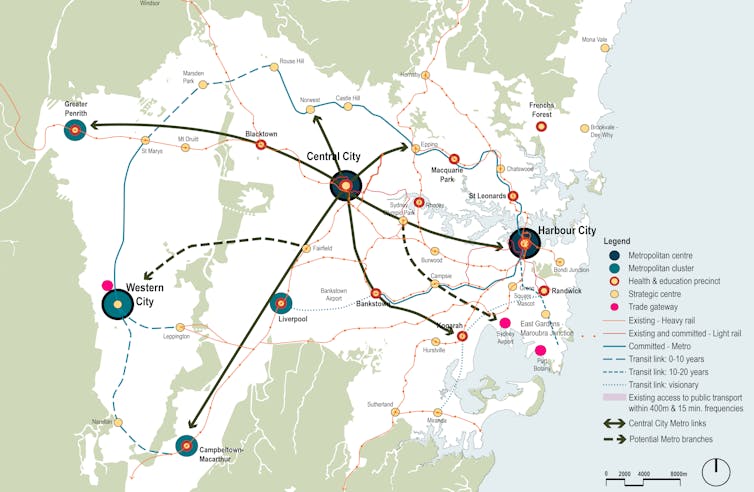
Image: Jamie van Geldermalsen, Mile Ilija Barbaric, Rao Umair Afzaal, Kun Fan, Author provided
In terms of digital connectivity, existing infrastructure is limited to copper wire infrastructure. Only small pockets are connected to the National Broadband Network. A more reliable network with increased capacity is essential for Sydney’s next metropolitan centre.

Liveability
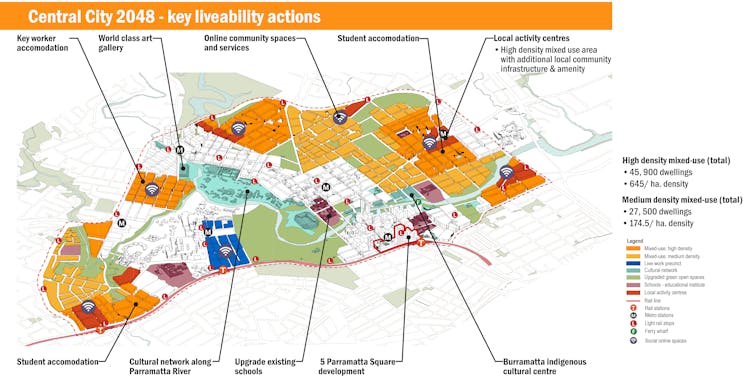
Image: Jamie van Geldermalsen, Mile Ilija Barbaric, Rao Umair Afzaal, Kun Fan, Author provided
At 41.5 people per hectare, Central City’s residential density is much lower than the Harbour City’s 64.8 people/hectare. Highly liveable cities such as Vancouver and Copenhagen, with residential densities of 167.64 persons/hectare and 61.8 persons/hectare respectively, suggest high-density cities can be liveable too.
To support increased densities, Central City 2048 proposes increased employment opportunities and investment in transport, social and cultural infrastructure. It capitalises on Central City’s cultural diversity, heritage and landscape to create a vibrant and liveable city. Affordable housing targets of 30% are proposed to ensure Central City is an equitable city.
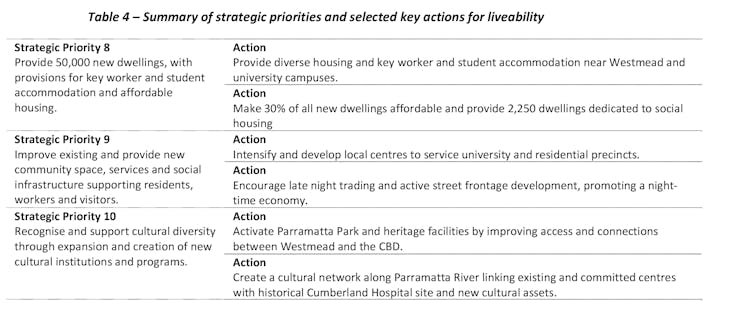
Invest in city shaping
Central City 2048 proposes one new rail line, three metro lines, just under 300,000 additional jobs, and a 30% affordable housing target for all new dwellings. This looks ambitious, if not shocking, to many. But it portrays a compelling image of what it takes to build a metropolitan CBD at the geographical heart of the Greater Sydney Region. This is what city-shaping, and indeed nation-building, looks like.
The decision is now ours: are we willing to invest what it takes to make it happen?
This article is inspired by the work of the students enrolled in the Integrated Urbanism Studio for the Master of Urbanism at the University of Sydney. I specifically would like to acknowledge the significant contributions made by Jamie van Geldermalsen, Mile Ilija Barbaric, Rao Umair Afzaal and Kun Fan.
This article is republished from The Conversation under a Creative Commons license. Read the original article.
Read part one of this series, Re-Imagining Sydney with 3 CBDs: how far off is a Parramatta CBD?
Image: Clément Falize
Associate Professor Tooran Alizadeh is the co-convener of Smart Urbanism (Research) Lab at the University of Sydney. Her latest book latest book Global Trends of Smart Cities: a comparative analysis of geography, city size, governance and urban planning was published in 2021 by Elsevier. She was recently awarded an ARC Future Fellowship to explore the complex socio-spatial implications of smart city development in India (2022-2026).
Share
We believe in open and honest access to knowledge. We use a Creative Commons Attribution NoDerivatives licence for our articles and podcasts, so you can republish them for free, online or in print.
